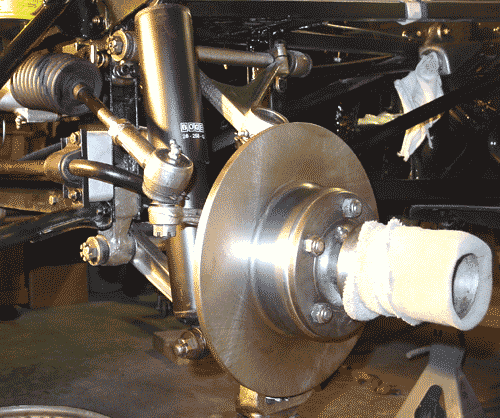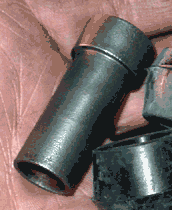c h r o n o l o g i c a l
g u i d e
> Year 1 Year 2 <
> Year 3 Year 4 <
> Year 5 Year 6 <
> Year 7 Year 8 <
> Year 9 Year 12 <
fetching & dismantling
sandblasting & evil rust
right "b" pillar
fixing right inner sill
basic body repair, por-15
frame removed, footwell repair
hole fixed, car flipped, etc.
sill stiffeners, rear bulkhead, etc.
various small parts
left sill, added stiffener, etc.
- lousy weather
trunk floor (reprise)
right floor, left sill, etc.
left floor, wheel well, etc.
right upper wishbone
floor done, car righted
rack, front frame, evil rust
left door cleaned & fitted
right door, right suspension
bonnet, part 1
bonnet, part 2
bonnet, part 3
bonnet, part 4
bonnet, part 5, etc.
bonnet, part 6
bonnet, outer sill, etc.
lots of stuff
left side, bonnet internals
frame, bonnet attached
engine stand, oil pan removal
pistons removed, sanding
sanding, final filling
color, frames, primer
brushed primer test
2nd coat primer
holiday greetings!
finish prep, detail on dent fix
spraying primer
winter chores
1. undercoat, plating prep
2. plating, spraying color
bonnet, plate prep, cylinder head
cylinder head paint, bushes
plating saga
front frame, suspension, part 1
front suspension, part 2
front suspension, part 3
priming and painting
bonnet, part 7
painting color!
boot lid, steering wheel
gas tank
winter chores
1. firewall sundry
2. front suspension
3. steering setup
4. master cylinders/pedals
5. the rest
data plate screed
winter to spring
1. irs rebuild
2. trunk floor, harness
3. data plate (again)
data plate, door, headlights
dash vinyl, crosshatch aluminum
windshield, right door
interior, "widget"
chrome parts!
door handle details
rolling chassis
molasses rust removal
electrical, part 1
bores, thrust washers
new engine!
head differences
block differences
compression ratio
engine in place!
alternator
catchup & photos
it runs!
setback and brakes
darned close & engine diffs
driven
top and seats
driving and little stuff
|
|
|
firewall sundry ||
front suspension ||
steering setup ||
master cylinders/pedals
the rest
Front Suspension
The front suspension waited since the basic installation of the bearings, brake rotors, and wheel hubs. I hadn't done much of anything to the torsion bars, since the prospect
of actually setting them up just exhausted me. But with work proceeding on the steering column and the rack and pinion setup, I decided it was time to do the front suspension
 pieces a bit more permanently. This entailed setting the torsion bars (Oh, joy!) and putting the steering rack and tie rod assembly into place. I also fitted the shock absorbers. So,
the only part that is not in place yet is the brake assembly. I figured that I would hold off on the front brakes until I can see the status of the rear brakes, which accept the Dunlop
brake slave cylinders, as I understand it. (Classic Jaguar frequently fits the front brakes on the rear and then replaces the fronts with higher grade brakes.) That way, I should be able
to get the rear suspension done and installed before I have to make a decision on the front brakes. If I fit the front brakes on the rear, I can also avoid doing a lot more
nickle plating right away, though of course there are parts in the rear that will require plating. At this point I might just do the plating in one fell swoop in any case —
it's not an important decision at this point.
pieces a bit more permanently. This entailed setting the torsion bars (Oh, joy!) and putting the steering rack and tie rod assembly into place. I also fitted the shock absorbers. So,
the only part that is not in place yet is the brake assembly. I figured that I would hold off on the front brakes until I can see the status of the rear brakes, which accept the Dunlop
brake slave cylinders, as I understand it. (Classic Jaguar frequently fits the front brakes on the rear and then replaces the fronts with higher grade brakes.) That way, I should be able
to get the rear suspension done and installed before I have to make a decision on the front brakes. If I fit the front brakes on the rear, I can also avoid doing a lot more
nickle plating right away, though of course there are parts in the rear that will require plating. At this point I might just do the plating in one fell swoop in any case —
it's not an important decision at this point.
Adjusting the torsion bars was not as bad as I had anticipated, though it wasn't a piece of cake either. The key at this point is to bring the tension on the bars to zero, so
that means loosening the upper ball joint pin and not having any of the other tension-causing connections in place either. The steering tie rod end should not be connected nor should
the anti-roll bar linkage. Of course, the shock absorber needs to be out entirely. In order to make sure that the upright isn't damaged by flopping freely, secure it by tying up or otherwise securing the upright through the upper ball joint
pin hole. I just used some old brake line and loosely attached the upright to the upper fulcrum shaft. You just need to have the upright and the lower wishbone swing freely enough
to lower the wishbone to the required level. The required length according to the Bentley manual is 17 13/16 inches from the centers of the upper and
lower bolts for the shock absorber. The manual supplies the plans for a bracket to hold the lower wishbone in place while adjusting the torsion bars.
The work is in the putzing that the torsion bar requires to fit correctly. I suppose there is a methodical way of doing it, but fine adjustment requires playing around with the
fit on both ends of the bar, since there are a different number of teeth on each end (24 and 25). This difference makes it possible to do some fine tuning of the fit. It took
me about a half dozen tries on both bars to get the holes to line up on the rear mounting brackets. If you've done the filing and fitting well enough on the teeth, you shouldn't
have to do much more than slide or perhaps gently tap the bars into place. I do think that the anti-seize grease is a good idea to use on those splines.
After the torsion bar is secure, you can begin putting pressure back onto the bar by attaching the various parts: anti-roll bar linkage, steering tie rod end, upper ball joint pin, and
the shock absorber. I saved the shock absorber for the end, since it was easiest to attach the parts that had the greatest flexibility first. I used a small hydraulic jack under
the lower wishbone to push the assembly upward in order to get the parts attached. Even with the other parts in place, I had to sit on the frame in order to install the shock. By
 the way, you need to attach the lower end of the shock absorber first, and then pull it up to fit the upper end.
the way, you need to attach the lower end of the shock absorber first, and then pull it up to fit the upper end.
As you can see, I have gone with "Boge" shocks all around. They have the same shape as the original Girling shocks, and they get good reports from people who have fitted
them in a "stock" setup like what I have intended with this restoration. I suppose that if I wanted to look more "authentic" I could go ahead and paint these shocks
the original Girling blue and they could pass for the old Girlings. Boge black suits me just fine, at any rate.
Fitting the shock absorbers did teach me the uses of being a part pack rat during disassembly. A small spacer that fits inside the bush-halves at the low end of the shock looked
to me to be the kind of thing that many people probably toss. The piece looks like it might come shipped as part of replacement bushes, but that's not the case. The part fits
easily into the bushes, which you slide in at both sides of the shock. There is no need to press the spacer into place. The big end goes against the lower wishbone.
|
|
| |

